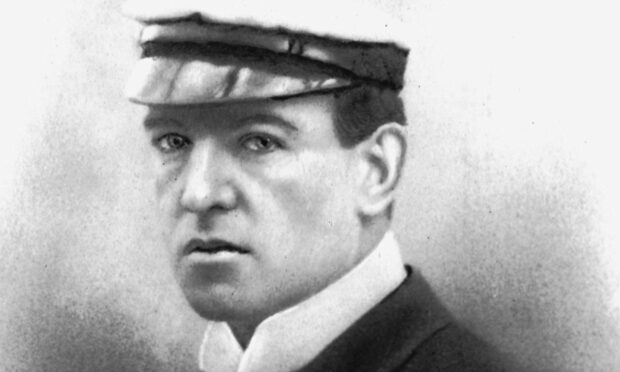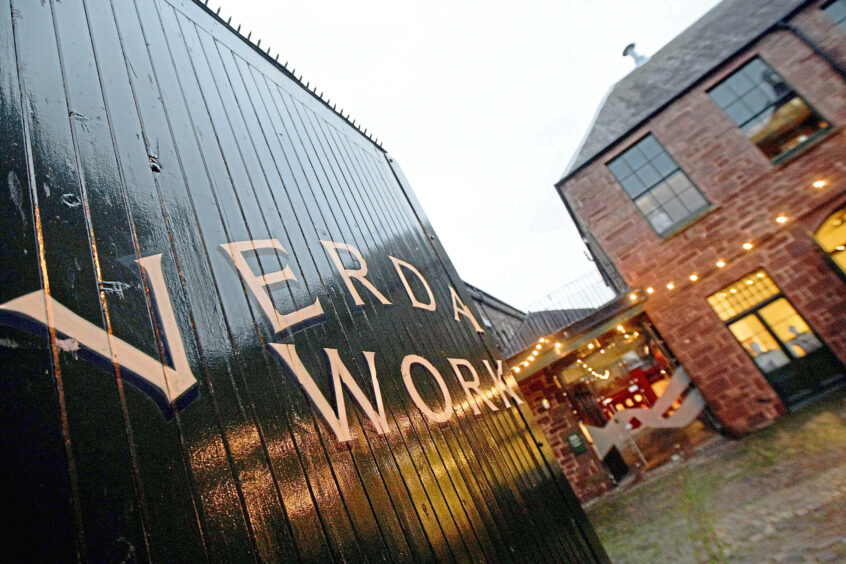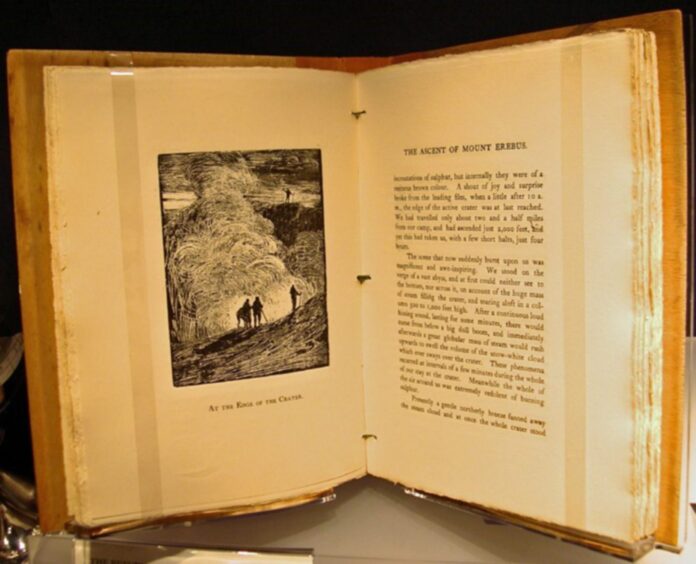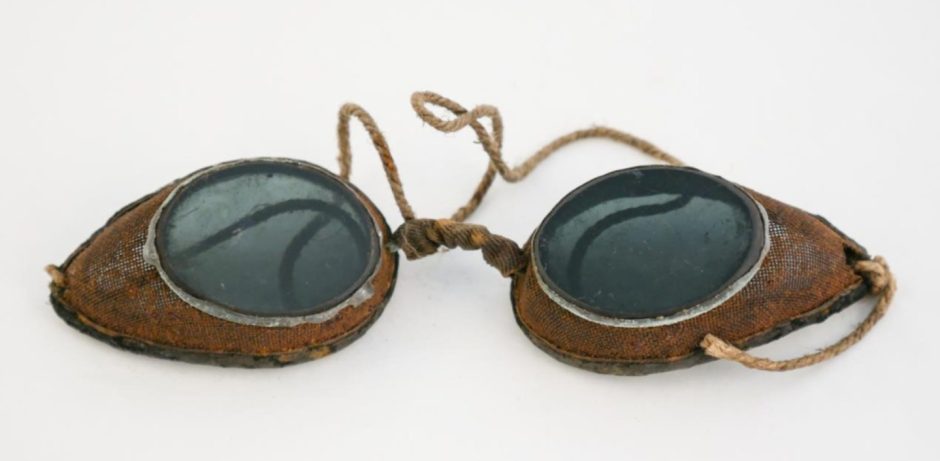Lovers of history and exploration are being given the rare opportunity to support the ongoing preservation of Dundee Heritage Trust’s jute and polar collections.
Items that can be ‘adopted’ through the trust’s newly launched ‘Adopt an Object’ campaign include the first book ever produced in the Antarctic, edited by world-famous explorer Sir Ernest Shackleton and a pair of snow goggles and skis both used during the RRS Discovery’s famous expedition.
The objects are looked after by the Dundee Heritage Trust and are part of two recognised collections of national significance.
Where are the objects kept in Dundee?
One is the jute collection, located at Verdant Works which tells the story of Dundee’s industrial heritage.
The second is the polar collection, located at the RRS Discovery/Discovery Point on the waterfront.
Emma Halford-Forbes, heritage and exhibitions director at Dundee Heritage Trust, said: “We are proud to showcase a diverse and fascinating collection of objects that bring the vibrant history of Dundee to life.
“Support today will enable us to continue providing expert conservation and curatorial care of these incredible objects and provide insights into the past for all who visit.”
Adopt an Object packages start from £5 per month for a year and offer a range of exclusive incentives and special opportunities to engage with the objects behind the scenes, as well as biannual updates from the expert curatorial team.
What objects are available to ‘adopt’?
Aurora Australis: the first book ever produced in the Antarctic, edited by Ernest Shackleton, 1908:
This unique book was written, printed and bound by the polar party to ward off boredom during the winter of 1908 as part of Ernest Shackleton’s 1907-1909 expedition to the Antarctic aboard the Nimrod.
Produced using broken up packing crates and lots of imagination, the book features over 100 pages of poems, articles, stories and illustrations inspired by expedition life.
Leitz microscope: used by Captain Scott and his crew aboard the Dundee-built Terra Nova during the National Antarctic Expedition of 1910-12:
At that time, the German company Leitz had a worldwide reputation for reliable optical instruments – very important for a detailed scientific study of the Antarctic environment.
Emperor Penguin: from the Terra Nova expedition, 1910-1912:
The Discovery expedition had been the first expedition to sight an Emperor Penguin rookery and collected the first egg of the species.
The collection’s penguin has been preserved in a showcase and mounted on an artificial ice base.
Pair of Skis: worn by Lt. Reginald Skelton, RRS Discovery’s chief engineer, RRS Discovery’s Antarctic Expedition 1901-1904:
The skis were made in Canada by Peterborough Canoe Company and the right-hand ski shows evidence of a repair, perhaps undertaken in Antarctica where a policy of ‘make do and mend’ was vital.
The crew on the Discovery had not learned to ski before they sailed, and some found them frustratingly hard to use.
Snow Goggles: worn by Frank Plumley in the Antarctic, 1901-1904:
A pair of early snow goggles, belonging to Frank Plumley, who joined Discovery’s 1901-1904 expedition as a stoker.
Frank also proved useful in building and repairing the expedition’s sledges and hardware.
Model aeroplane: made from salvaged jute tools, 1991:
This wooden model aeroplane is made from various weaving and spinning tools and was created by artist Sam Samson who crafts objects from weathered wood, salvaged metal and old mill equipment.
Cop Apron: a rare surviving example of mill workwear:
Women working in the jute factories of Dundee would wear a cop apron tied around their waist.
Made from a heavy jute canvas, they held cops and bobbins of yarn which were fed into their frames as part of their work within the mills.
Jute Skirt with tulip: designed by Mary Quant in 1963:
In 1963, iconic designer Mary Quant created this knee-length skirt of woven jute, as part of the ‘Ginger Culture Collection’.
The jute industry, which employed 40,000 people in Scotland at the height of its success, sponsored a group of scientists to find new ways of marketing jute.
“Union Special” Sack Sewing Machine, model 1900 AA:
Sacking was a staple product of the Dundee jute industry.
In the factory, sacks were sewn up using machines like this one, stitched with a sturdy drawstring and printed with a variety of business logos before being shipped out to customers.
How to adopt an object
For more information visit: https://www.dundeeheritagetrust.co.uk/adopting-an-object-from-our-collection/ or visit Discovery Point and Verdant Works to see the items in person.
















Conversation